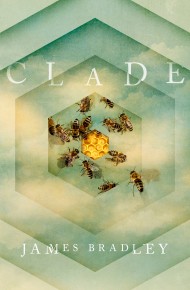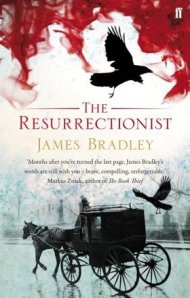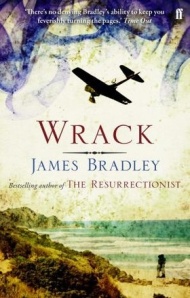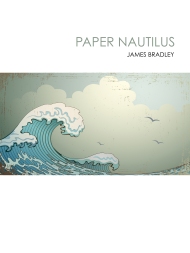Perfect Worlds in Miniature: Stories by Annie Proulx, Robert Drewe, Michael Chabon and Anne Enright
 A Perfect World
A Perfect World
Michael Chabon
The Rip
Robert Drewe
Taking Pictures
Anne Enright
Fine Just the Way It Is: Wyoming Stories 3
Annie Proulx
All fiction is necessarily synecdochical, a selection of parts intended to evoke a larger whole which remains necessarily unspoken; just as the finite nature of processing power places limitations on the resolution of virtual reality, the infinite complexity and detail of the world will always exceed our capacity to describe it.
In the context of a novel’s sprawl this quality is less evident. Like some roving camera the authorial eye offers us expansiveness, moving more or less seamlessly from wide shot to close-up, taking in details and moments, watching characters speak and change, observing the passage of weeks, months, even lifetimes. Sometimes entire worlds are created in this fashion, Dickens’ London, Balzac’s Paris, Joyce’s Dublin. At other times, in books such as Nicholson Baker’s The Mezzanine, novelists parody this mimetic impulse, compressing their frame to a few seconds, focussing the reader’s gaze inwards, into the cracks and rivets of their fictional landscapes, exposing through its very attention to the finest detail something of fiction’s fundamental artificiality.
For the practitioner of the short story, denied the illusions of scale the novel provides, the challenge is more pronounced. In contrast to the often encyclopaedic impulse of the novel, the short story is defined as much by its spaces and elisions as by its visible elements, by what is left out as much as by what goes in.
In the nineteenth century (and indeed even today, in the form’s more generic formulations) this translated into an emphasis upon terse, closely-plotted storytelling, often married to an emphasis upon surprise endings and narrative sleights of hand. But after Chekhov the short story has come to be understood and practiced quite differently, as something rooted in the provisionality of human existence, its fits and starts and strange disjunctions, a form that lives not by explication but, like a moment in a stranger’s life glimpsed through an open door, by implication and suggestion, as full of questions as it is of answers.
Yet if it was Chekhov who first understood the capacity of the short story’s fragmentary nature to capture something essential about the mystery of individual lives, it has been American writers, from Hemingway and Flannery O’Connor to more contemporary practitioners such as Carver, Ford, or even Jhumpa Lahiri, who have defined its contemporary form, at least in English, marrying the possibilities of the form to a naturalism that embraces the reality of contemporary lives.
Annie Proulx has contributed at least two stories to this contemporary American canon, ‘Brokeback Mountain’ and ‘The Half-Skinned Steer’. The former, made famous by Ang Lee’s Oscar-winning film, appeared originally in The New Yorker, and subsequently in her 1999 collection, Close Range.
Prior to Close Range, and ‘Brokeback Mountain’ Proulx (who at that point was still appending an “E” to her name) was better known as a novelist, having published three novels, her unconsoling debut, Postcards, the international phenomenon, The Shipping News, and the largely unloved Accordion Crimes, along with one relatively undistinguished volume of short stories, Heart Songs.
Proulx’s first three novels inevitably recall that other great inheritor of the Faulknerian tradition, Cormac McCarthy. Yet where McCarthy’s novels reveal a deep, almost geological sense of the mythic dimensions of the West’s history, of its Biblical cycles of blood for blood, Proulx’s tend more towards a sort of irritable bleakness, an impatience with the slow work of the novel, with her characters, and – one suspects – with the expectations of her readers.
Perhaps this quality is most evident in Accordion Crimes, a book which is only a novel in the most rudimentary sense, its story built around the peregrinations of an accordion stuffed with cash which, as it passes from hand to hand across generations brings nothing but suffering and pain, a process which comes to its ludicrous if inevitable conclusion in a truly monstrous scene in which a woman has both arms sliced off at the elbow by a piece of flying tin.
One senses, in Accordion Crimes, both the fundamental and oppressive bleakness of Proulx’s vision and the incompatibility of this vision with the narrative demands of the novel. Story, particularly in the expansive framework of the novel, requires sympathy, transformation, possibility; Proulx’s natural tendency is to deny all three. Like Hardy, another writer who gave away what he considered the tawdry parlour tricks of the novel for a form he thought truer, at some deep level Proulx’s novels betray a fundamental denial of the fact of human volition, a determination not that things sometimes turn out badly but that they will turn out badly.
This quality is still present in both ‘Brokeback Mountain’ and the other stories collected in Close Range, but uncoupled from novelistic demands for resolution Proulx seems also to leave behind her need to impose her will upon the material. At their best they are stark slivers of lives, windows on a world whose often bitter hardships Proulx is content to let us bear witness to rather than make a point of or control.
Close Range was followed by another volume of short stories, Bad Dirt, and a novel that lacks even Accordion Crimes’ fairly cursory gesture towards novelistic form, That Old Ace In The Hole. Close Range, it and Bad Dirt are now joined by a third volume of what Proulx has, since the publication of Bad Dirt, called her Wyoming Stories, Fine Just the Way It Is.
The stories in Fine Just the Way It Is do not stray far from the idiosyncratic territory Proulx made her own in the previous two volumes. ‘The Old Cowboy Songs’ offers an abbreviated portrait of life in the old west, and the lonely deaths of a young couple, ‘Testimony of the Donkey’ offers a more contemporary take on the same theme, while ‘Tits-Up in a Ditch’ details the lives of a young couple heading nowhere fast. These essentially naturalistic stories are set against a series of quirky pieces starring the Devil and his assistant, Duane, and a ghost story of sorts about a killer tree, ‘The Sagebrush Kid’.
In many ways the pieces in Fine Just the Way It Is are only barely stories at all, so ragged and unlovely are they. Having long since rebelled against the narrative demands of the novel Proulx now seems impatient with even the much less exacting narrative demands of the short story.
This is not to deny that there are places in which Proulx’s unconsoling vision and frustration with the vapidity and self-obsession of contemporary life is telling. In ‘Family Man’, a woman solicits the life history of an ageing cowboy in a nursing home, only to reject his suddenly naked pain at recalling his long hidden past and complain to her husband, “It’s ridiculous . . . He got all worked up about his father who died back in the 1930s. You’d think there would have been closure by now.” Likewise in the final story, ‘Tits-Up in a Ditch’, the stark horror of the cost of the Iraq war for the American poor who fight it is given almost visceral force. Yet there are too many places where one feels Proulx is less interested in her characters and the possibilities they embody than in proving some deeper, and less defensible point about the way the universe stacks the deck against us all.
If Proulx’s stories sometimes seem to seek to leave the strictures of the form behind altogether, the stories in Michael Chabon’s A Model World are far more conventional, both in subject and form. Divided into two halves, its first half is comprised of stories which range between university campuses and Jewish weddings, broken relationships and unconsummated love, its second, ‘The Lost World’ of a cycle of stories detailing the slow collapse of a marriage, and the complex after-effects on the elder of the two sons.
Like his contemporary, Jonathan Lethem, Chabon’s fiction celebrates his pleasure in the possibilities of pulp fiction and the comic book. It is a delight that he gives exuberant life to in his joyous The Amazing Adventures of Kavalier and Clay (and which receives more than one sly nod in Wonder Boys). Chabon is uncommonly good at accessing a sort of romantic yearning more commonly associated with cinema than literature.
Yet despite the achievement of novels such as The Amazing Adventures of Kavalier and Clay, Chabon’s more recent work, and in particular The Yiddish Policeman’s Union, suggest the limits of both Chabon’s fascination with pulp and, more deeply, his capacity to move beyond an essentially adolescent emotional register (perhaps interestingly one might see a struggle to transcend these limitations in Jonathan Lethem’s recent work, in particular The Fortress of Solitude).
The stories in A Model World are hampered by this same curious lack of maturity. The world Chabon draws is not real in any deep sense, and neither are his characters. For all that they are narrated with Chabon’s characteristic verve (and increasing prolixity), even in the book’s stronger second half the stories never quite seem to reach beyond a sort of rueful sadness about innocence’s loss.
If Proulx’s stories strain against the demands of the short story form, and Chabon’s powers seem somehow denuded by it, in The Rip Robert Drewe works it with the ease and confidence of a writer safe in familiar territory. Set largely in the seachange territory of the northern NSW coast where Drewe now lives, its thirteen stories form a sort of triptych with Drewe’s two previous collections, 1983’s Bodysurfers and 1989’s Bay of Contented Men, focussed not on the sexual and romantic risk-taking of Bodysurfers, or the petty betrayals and failing marriages of Bay of Contented Men, but on a cast of characters now well settled into the long haul of middle-aged middle class emptiness.
Drewe is usually considered a quintessentially Australian writer, but in many ways the textures of his often blackly witty portrait of contemporary Australian life often seems to owe more to the Los Angeles of Bret Easton Ellis or David Hockney’s swimming pool paintings than to more conventional images of Australianness. For all its creature comforts his Australia is a dulled, anodyne place, his stories, with their repeated images of exercise and exercise bikes, shadowed by a mortality his characters refuse to acknowledge.
Yet of the four books under review, the true revelation is Anne Enright’s Taking Pictures. Winner of last year’s Booker Prize for the occasionally remarkable, if uneven The Gathering, Enright is a writer of frightening, if unconventional intelligence, an intelligence which is given startling force in the stories collected in Taking Pictures. Enright’s real interest is in the mysteriousness of those around us, and the often unseen ways families, and men and women, are bound together by that which stays unspoken. Sex, death, desire, all move just under the surface of these stories, their barely sublimated presences lending them an unsettling power.
Enright is particularly gifted at capturing the moments in which characters thwart themselves, or find themselves caught in the flux of anger and love which characterises so many of our closest relationships, at the small surprises that bring us undone. In ‘Pillow’ an Irish student wakes to find her Chinese housemate trying to smother her, shocked into a realization of her own part in creating the moment, her not-quite unconscious cruelty, while in the chilling ‘Caravan’, a woman walks past a ghost in a rented caravan, a creature so ordinary in its monstrous fury she does not even see it until it is gone.
The stories in Taking Pictures are genuine miracles of compression, capable of surprising, frightening, harrowing. Restless, dangerous, constantly unpredictable, they are a testament not merely to Anne Enright’s remarkable and very particular intelligence, but to the possibilities of the short story itself, its capacity to reveal the complex and often contradictory nature of our inner lives, and the unpredictable ways in which they are
© James Bradley. Originally published in The Australian Literary Review, October 2008.
Break text










